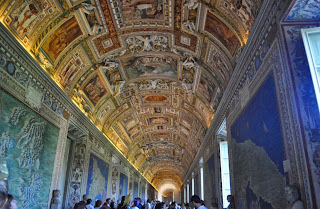I would like to write about my favorite dish which is Bistecca alla fiorentina – The Florentine Steak which is also one of the most famous dishes of Tuscan cuisine.
The Florentine steak is a cut of beef combined with the specific preparation. It is a high cut including the bone and it have to be cook over a wood or on the grill if you don’t have another possibility with doneness "blood".
I asked my friend who has finished the culinary school what is the definition of Bistecca alla fiorentina. He explained me that the Florentine Steak is you get from the cut from the loin (which exactly is the part corresponding to the lumbar vertebrae, the middle of the back from the tail) from Chianina or Maremmana beef. In the middle this kind of cut should be the bone in the shape of “T” and for that reason in English this type of meat is called “T-bone”. The steak should have the thread on the one part and the sirloin on the other.
The history of the Florentine steak is so old as the city from which it takes the name. However, its tradition, its fame and its name can be traced from to the celebration of the feast of San Lorenzo and the Medici family. At San Lorenzo’s Day on 10th August, the city was illuminated with light of bonfires and the habitants used to roast the large quantities of beef. At the celebrations of San Lorenzo’s day were present some English knights and Florentine people offered them the meat roasted over fires. They called it in their language beef steak referring to the type of meat they were eating. From here a translation adapted to the current language created the word bistecca which is used to the present day.
The most important thing is the preparation of the Florentine Steak which is shared often between two or more persons. It should be a piece of meat of 1 or 1,5 kg with thick of 4 fingers without seasoning, fundamental operation to prevent hardening. It is grill 4-5 minutes per side (flipping it only once) and 5-7 minutes vertically standing on its bone so as to make the blood drain out. Traditional accompaniment to Bistecca alla fiornetina are the cannellini bean with olive oil, the salad and grilled potatoes. On the table it should be present the traditional red Chianti vine.
Buon apettito !






























